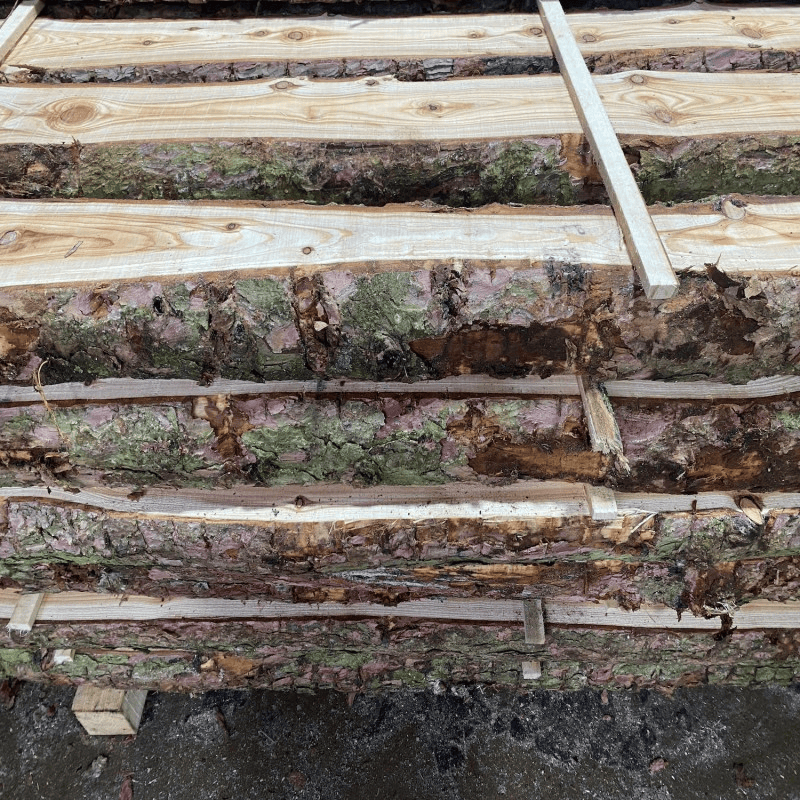What Thickness Do Oak Boards Come In?
When customers call us at UK Oak, one of the most common questions we hear is about board thickness. After decades in the timber business, we've learned that choosing the right thickness isn't just about personal preference—it's about understanding how your specific project will perform over time.
The Standard Range: 15mm to 32mm
Most solid oak boards fall between 15mm and 32mm thick, though we occasionally stock specialty sizes outside this range. Each thickness serves distinct purposes, and we've seen how different applications demand different approaches.
15mm boards are our most popular choice for residential flooring. They provide excellent stability while keeping floor height manageable—crucial when you're working around existing door frames and skirting boards. We've supplied thousands of square metres of 15mm oak over the years, and it consistently delivers reliable performance in homes across the UK.
18mm and 20mm boards represent the premium residential option. Estate agents often specify 20mm boards for high-end properties because they feel more substantial underfoot. The extra thickness also provides better acoustic properties, reducing footfall noise between floors—something we frequently discuss with customers renovating Victorian terraces.
25mm and 32mm boards are typically reserved for commercial applications or period property restorations. We source these thicker boards specifically for projects where authenticity matters. Georgian and Victorian buildings often featured substantial floorboards, and using appropriate thickness helps maintain the property's character.
Subfloor Considerations
Your subfloor type significantly influences thickness requirements. For concrete subfloors with underfloor heating, we generally recommend 15mm boards. The thinner profile allows heat to transfer more efficiently whilst maintaining structural integrity.
Suspended timber floors over joists require more consideration. Boards spanning 400mm joist centres need at least 18mm thickness to prevent flexing. We've seen too many installations where thin boards over wide joist spacing create bouncy floors—an expensive mistake to rectify later.
Underfloor Heating Compatibility
Underfloor heating systems work best with boards between 15mm and 20mm thick. Thicker boards create thermal lag, meaning your heating system works harder and responds more slowly to temperature changes. We've tested various combinations over the years, and 18mm boards offer the best balance of thermal efficiency and structural performance.
What We Stock at UK Oak
Our standard inventory includes 15mm, 18mm, 20mm, and 25mm boards in character and prime grades. We maintain substantial stocks because consistent thickness is crucial for professional installations. Many of our trade customers rely on us for large quantities with guaranteed dimensional consistency.
For specialist requirements, we can mill boards to custom thicknesses. Our sawmill capabilities allow us to produce anything from 12mm for specific renovation projects up to 40mm for heavy commercial use. Lead times for custom milling typically run 2-3 weeks, depending on the volume required.
Practical Installation Advice
When planning your installation, remember that final floor height affects everything from door clearances to kitchen unit plinths. We always advise measuring existing clearances before ordering. A 20mm board might seem perfect until you realise your kitchen door won't open properly.
Consider expansion gaps alongside oak board thickness. Solid oak moves seasonally, and thicker boards can show more pronounced movement. We recommend 15mm expansion gaps around room perimeters regardless of board thickness—something we've learned from countless installations over the years.
Making Your Choice
The right thickness depends on your specific situation: subfloor type, heating system, room usage, and aesthetic preferences. Our team has guided thousands of customers through this decision, and we're always happy to discuss your particular requirements.
For most residential applications, 18mm boards provide excellent performance and longevity. They're thick enough to sand and refinish multiple times over their lifespan whilst remaining cost-effective and practical to install.
If you're unsure about the best thickness for your project, give us a call on 01536 267107. We can discuss your specific requirements and help ensure you choose oak boards that will perform beautifully for decades to come.
« Back to news list






